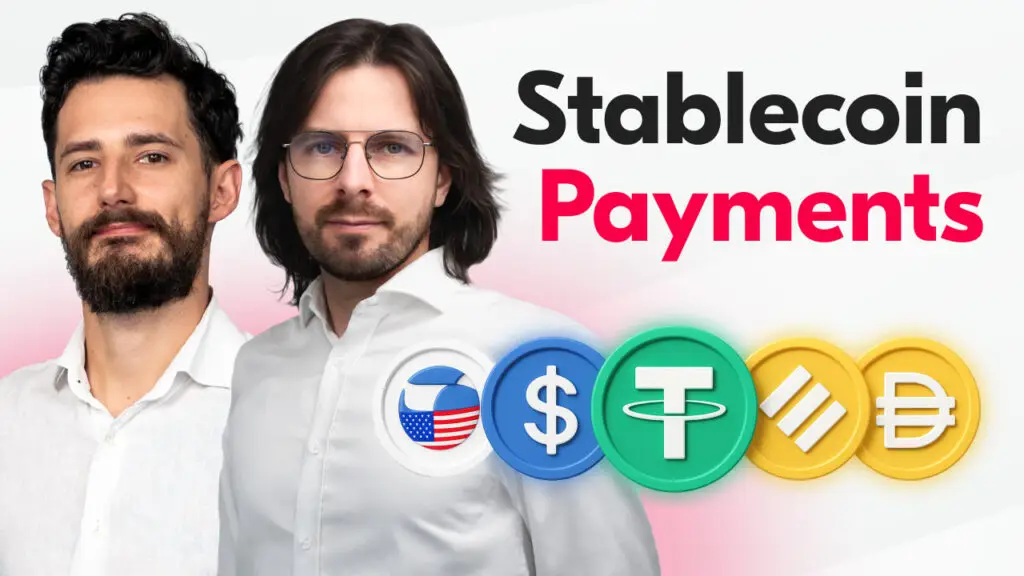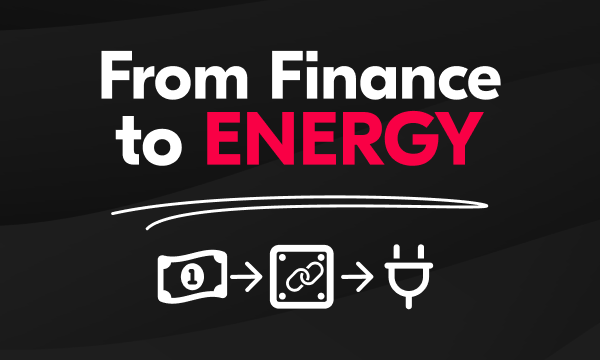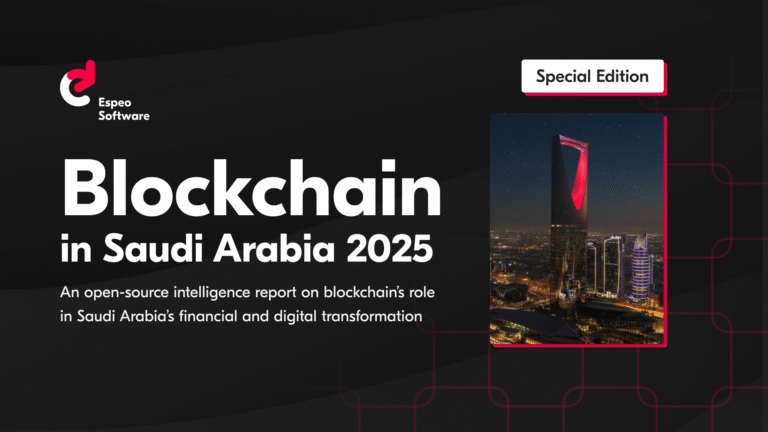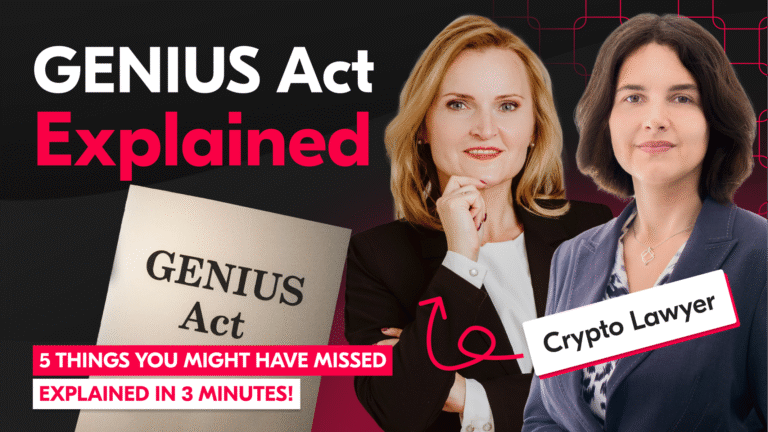Imagine sending money through your banking app, and having it arrive abroad within seconds – as fast as sending a text. This isn’t a future promise. It’s possible today using stablecoin payments.
In this guide, you will learn exactly how to design and launch stablecoin wallets and stablecoin payment systems. Whether you work for a fintech or a regulated bank, this step-by-step approach is built on practical experience in regulated markets like the Gulf Region.
We’ll cover everything: from selecting the right stablecoin to meeting compliance requirements, securing infrastructure, and enabling cross-border, real-time payments.
Why Stablecoins for Payments?
Traditional cross-border payment rails are outdated. They’re slow, expensive, and fragmented. In the Gulf Region, for example, instant payments between banks within a single jurisdiction are possible, but moving money across borders often takes days.
With a properly designed stablecoin wallet and payment system, you can reduce settlement times to seconds and costs to fractions of a cent – while remaining fully compliant with financial regulations.
Step 1: Choose Your Stablecoin Design Wisely
Designing your stablecoin wallet and payments system starts with a strategic decision: which type of stablecoin will you adopt? This choice shapes not only your technology stack but also your regulatory exposure, operational risk, liquidity management, and time-to-market.
Below, we outline three common approaches, along with their advantages, challenges, and why public stablecoins like USDC on Stellar are often the most practical choice for banks and fintechs.
Your Options:
- Adopt a Public Stablecoin (e.g., USDC on Stellar)
- White-Label a Token via a Provider (e.g., Paxos)
- Issue Your Own Fiat-Backed Token
Let’s go over each.
Adopting a Public Stablecoin
If we choose to adopt public USDC on the Stellar network, we can expect transaction settlement in approximately five seconds. Each transfer consumes only one hundred-thousandth of a lumen, equating to a fraction of a US cent.
Liquidity remains critical. We must avoid any delays, particularly for time-sensitive payments such as salaries. Circulating USDC on Stellar currently stands at around USD 151 million – roughly a quarter of a percent of total USDC in circulation. Although this figure has doubled over the past year, maintaining appropriate liquidity buffers and monitoring peak periods remains essential.
We will also need to establish a custody solution. Fireblocks is a strong candidate. Over two thousand institutions already rely on its multi-party computation (MPC) security. The platform has secured over USD 10 trillion in digital-asset transfers, offering bank-grade signing policies without requiring us to build hardware security modules internally.
White-Labeling a Token via a Provider like Paxos
One possibility is to badge a token through Paxos.
Paxos operates within the Abu Dhabi Global Market (ADGM) and can issue a dollar-backed token under our brand, while managing reserves and attestations. With Standard Chartered holding the collateral, this approach would eliminate balance-sheet drag. However, Paxos issues stablecoins on Ethereum and Arbitrum. Integrating these with Stellar would require a bridge or direct multi-chain operations, increasing technical complexity. While feasible, this path adds friction and is not recommended at this stage.
Issuing a Fiat-Backed Token
The third route is our own coin. We would form a special-purpose issuer, place full-value reserves, and obtain a new licence. Abu Dhabi’s consultation paper on fiat-referenced tokens outlines capital, audit and disclosure duties. Review and approval could take close to a year.
Recommended Approach:
For speed and compliance, adopting USDC on the Stellar network is typically the fastest route. Settlement takes ~5 seconds, transaction fees are negligible, and you avoid the complexity of launching a new asset. Custody can be managed securely via platforms like Fireblocks.
✅ Why this works: Fast to deploy, regulator-friendly, proven liquidity, minimal operational overhead.
Step 2: Navigate Regulatory Requirements Early
Launching a stablecoin wallet or payments solution is not just a technical project – it is fundamentally a regulatory exercise. Financial services are tightly regulated, and any solution touching money transmission, custody or payments infrastructure requires early, proactive engagement with regulators.
Your success depends on selecting the right jurisdiction, understanding regulatory expectations upfront, and aligning your licensing approach to your long-term strategy.
Regulations for stablecoin payments vary across jurisdictions. However, clear patterns are emerging from forward-looking financial centres like the United Arab Emirates (UAE) and Bahrain. These regions offer regulatory clarity and frameworks designed for fintech innovation – crucial for launching quickly and safely.
Regulatory Options in the Gulf Region:
- Abu Dhabi Global Market (ADGM) – RegLab Sandbox or Full Licence
- Dubai International Financial Centre (DIFC) – Innovation Testing Licence or Category 3D
- Central Bank of Bahrain (CBB) – Crypto-Asset Module
Options in the United Arab Emirates (UAE)
In the UAE, we can apply either for the RegLab sandbox licence or a full Money Services Permission (MSP) through ADGM. If our only activity is holding USDC (USD Coin), the sandbox route offers a fast-track with approval in roughly six months.
At the DIFC in Dubai, we would file for either a Category 3D Money Services licence or the Innovation Testing Licence (ITL). Until February this year, USDC was not on DIFC’s recognised-token list. However, Circle secured approval in February 2025, so the regulator is now familiar and comfortable with the stablecoin we intend to use.
Bahrain’s regulatory framework for stablecoin custody and payments
Bahrain also provides a strong option. The Central Bank of Bahrain (CBB) regulates custody and transfers under its Crypto-Asset Module (CRA). If we later mint our own stablecoin, we will need to comply with the Stablecoin Issuance and Offering Module, introduced in 2024. This module mandates:
- Daily reserve reconciliation
- Monthly audits
For now, those obligations are future considerations.
Relevant CBB regulations (April 2023 updates):
- CRA-8.1 General requirements
- CRA-8.2 Custodial arrangements
- CRA-8.3 Crypto wallets
- CRA-8.4 Reconciliation, client reporting, record keeping
Meeting regulatory expectations for stablecoin custody and payments
Each regulator will establish both pre-launch requirements and ongoing compliance obligations. Choosing Fireblocks as our custody solution simplifies many of these processes. When a customer presses Send, Fireblocks applies three parallel security and compliance checks:
- Wallet screening:
Fireblocks screens the wallet address. With Chainalysis, it risk-scores the destination. Addresses linked to sanctions, darknet markets or mixers are blocked automatically. - Transaction-level KYT (Know Your Transaction):
Fireblocks monitors for structuring, unusual transaction velocity and other suspicious patterns. - Travel Rule compliance:
Fireblocks triggers a Travel Rule handshake with the counterparty’s Virtual Asset Service Provider (VASP), using Notabene’s API integrated into the Fireblocks platform.
How the Travel Rule works for stablecoin payments
When transactions move across blockchain networks, they pass through multiple points or hops. Each hop must include the originator and beneficiary data. In ADGM, there is no de minimis threshold – all transfers, no matter how small, must include full Travel Rule data.
Fireblocks reads the jurisdiction code we include in the transaction metadata and ensures compliance by attaching customer data when required. These steps ensure your stablecoin payment system passes both licensing and ongoing supervision checks.
KYC, Wolfsberg CBDDQ and US dollar clearing for stablecoins
As noted earlier, we plan to follow American KYC (Know Your Customer) standards. Many correspondent banks require this for USD clearing.
We must also complete the Wolfsberg Correspondent Banking Due Diligence Questionnaire (CBDDQ). This is the industry standard for institutions handling large-scale US dollar transactions.
Our Wolfsberg CBDDQ package will include four key artefacts:
- Our KYC policy
- Our Travel Rule standard operating procedure (SOP)
- The Chainalysis–Fireblocks wallet-risk matrix
- Our model-validation memo for transaction monitoring
Wolfsberg recommends refreshing this documentation every 12 to 18 months. We will set a diary reminder from the outset.
We now have clarity on the next steps: select the right regulator (ADGM, DIFC, or CBB), secure the required licence or sandbox approval, activate Fireblocks’ compliance tools, and prepare a Wolfsberg CBDDQ dossier for USD clearing. These actions ensure a compliant and secure stablecoin payments launch.
Step 3: Build Secure, Compliant Infrastructure
We need to decide how to run the platform day-to-day without ever risking customers’ data or keys. This requires three layers of defence.
Three Layers of Security:
- Cloud Layer (Outer Ring)
- Host in AWS or Azure UAE for data localisation.
- Meet local compliance standards (encryption at rest, data-residency laws).
- Key Management Layer (Middle Ring)
- Deploy MPC (Multi-Party Computation) with Fireblocks.
- Distribute key shards across multiple jurisdictions for resilience.
- Transaction Layer (Inner Ring)
- Operate your own Stellar validator in-region.
- Achieve sub-second latency and fast ledger closure.
This architecture ensures that your data stays local, keys remain secure, and transactions execute in real-time.
Stablecoin payments are only as strong as the infrastructure they rely on. This three-ring architecture safeguards assets, accelerates compliance sign-off, and establishes the technical credibility needed to operate at scale in regulated markets.
Shortcut to Success: Design security and compliance as non-negotiable from Day One. Retrofits are expensive, disruptive, and undermine regulator confidence.
Step 4: Deliver a Seamless Wallet Experience
A payment request lands on our API gateway in AWS. A compliance microservice triggers a call to Fireblocks. There, we verify the wallet-risk score, run velocity checks, and confirm policy approvals. Once cleared, Fireblocks assembles the MPC (Multi-Party Computation) signature and broadcasts the USDC transfer to our local Stellar validator.
The Horizon API confirms finality within five seconds, sends a callback, and the mobile app flips from “pending” to “done.” Every step is encrypted, logged to a write-once S3 bucket, and replicated to Bahrain for disaster recovery.
This setup demonstrates to regulators that data stays in-country, keys remain fragmented, and ledger entries are fully auditable – satisfying all security expectations in one go. With this, legal and compliance sign-off should be a formality, not a blocker.
Customer experience: what users actually see
The first step is spinning up a wallet for every customer inside the banking app. Fireblocks’ Wallet-as-a-Service API makes this simple. A single endpoint during sign-up creates an MPC wallet in under a second. This forms the backbone of our system.
Customers expect to move money seamlessly between their fiat account and on-chain USDC. We achieve this via a cash bridge using Stellar’s SEP-24 anchor. The anchor accepts a push payment in dirhams, mints the matching USDC, and drops it into the wallet – all within 15 seconds.
For withdrawals, the user taps “Withdraw.” The anchor burns the USDC and pushes dirhams back via the payments platform. It’s crucial that withdrawals are as fast as top-ups. Slow exits erode trust in any new wallet solution.
Payment UX Considerations
The payment screen mirrors any mainstream wallet app. Users can select a contact or scan a QR code. We leverage the phone number aliasing already familiar through platforms like Aani, mapping aliases to Stellar addresses. With QR adoption in the Gulf growing 200% year-on-year, we tap into existing user habits.
We’ll also add an optional memo field. Businesses need references: invoice numbers, VAT IDs, reconciliation notes. We keep this 140-character memo off-chain, linking it to the transaction hash. This meets business needs without placing personal data on a public ledger.
Step 5: Enable Broader Interoperability
Customers can now send USDC within our app, but without connecting to other banks, card schemes, and SWIFT, our fast rail risks becoming an isolated island.
Integration Strategy:
- Banks without Stellar: Use local anchors to convert between fiat and stablecoin.
- Multi-currency Payments: Use Stellar path payments for atomic swaps (e.g., USDC to EURC).
- Other Banks on Stellar: Open private corridors with shared Fireblocks workspaces.
- Merchant Acceptance: Integrate Visa and Mastercard APIs to enable merchants to accept stablecoins but settle in local currency.
- SWIFT Integration: Embed transaction hashes in SWIFT gpi messages for seamless reconciliation.
- RTGS Compatibility: Convert on-chain settlements into ISO 20022 messages for national settlement systems.
Connecting with banks beyond Stellar
For banks that don’t run on Stellar, we bridge through anchors – regulated gateways that swap bank money for on-chain tokens. For example, if a customer in Dubai wants to pay her cousin in Bahrain, our UAE anchor takes dirhams via Aani, mints USDC on Stellar, and Bahrain’s anchor redeems that USDC into dinars. Anchors provide local cash-in and cash-out, preventing tokens from becoming trapped in wallets.
Cross-currency payouts through path payments
What if the cousin prefers euros over dinars? Path payments solve this. Stellar enables atomic swaps: USDC to Lumen to EURC within a single transaction. The network locks in the exchange rate to eliminate volatility risk. This mechanism is essential, as manual FX conversion would undermine the instant experience we promise.
Private corridors for Stellar-native banks
If the counterparty also runs Stellar, we can establish a private corridor through a shared Fireblocks workspace seeded with intraday USDC. This allows real-time settlement without waiting for end-of-day SWIFT batches. If the counterparty isn’t on Stellar, we redeem USDC through the anchor and push dirhams over Aani.
Private corridors reduce intraday liquidity costs and allow both treasuries to reconcile on the same real-time ledger.
Integrating with Visa and Mastercard APIs
To support merchant payments, we integrate with Visa and Mastercard APIs. Visa already settles merchant acquirers in USDC across several chains, while Mastercard’s Crypto Credential maps blockchain addresses to aliases. These APIs enable a café to accept USDC while receiving dirhams overnight.
Card-scheme integrations matter because they transform our rail from a P2P tool into spendable money.
Bridging with SWIFT for legacy continuity
SWIFT’s 2023 tokenisation pilot with UBS and Chainlink demonstrated how to embed an on-chain transaction hash in a gpi message without breaking SWIFT’s schema. A gpi message (Global Payments Innovation) enhances traditional SWIFT MT messages with real-time tracking, even across currency exchanges.
We embed Horizon’s transaction hash for each USDC transfer into the gpi payload. This preserves operational continuity, allowing teams to use their existing dashboards while maintaining a clean audit trail for compliance.
Keeping SWIFT gpi in place delivers two key benefits:
- No retraining for staff
- Unbroken audit trails for compliance reviewers
Systemically important payments and RTGS integration
For systemically important payments – those critical to the stability of financial systems – we integrate with Real-Time Gross Settlement (RTGS) infrastructure. After the on-chain settlement, our middleware converts the advice into an ISO 20022-compliant message and posts it to the national RTGS queue.
We’re not tearing up legacy rails – we’re laying faster, more efficient tracks beneath them. Treasurers, merchants, regulators and customers keep the workflows they trust, while we deliver 24/7, faster cross-border settlement.
Let’s now define how we will roll this out.
Step 6: Rollout Roadmap
I recommend launching the system in four phases.
Phase 1: Sandbox Pilot
We apply for either ADGM’s RegLab or the DIFC Innovation Testing Licence. These frameworks cap us at 500 users and 10,000-dirham transaction limits. This keeps potential bugs or compliance misses contained.
We will limit the corridor to UAE and Bahrain, leveraging existing anchors on both sides. Our target metrics are clear:
- Settlement in under 10 seconds
- Fees below one cent per transaction
- Zero sanctions hits
If we cannot achieve this in a controlled friends-and-family environment, we refine the tech before opening it to the public.
Phase 2: Consumer MVP
If the pilot succeeds, we invite regulators to observe our live logs. With their approval, we proceed to a consumer MVP. This involves upgrading to a full DIFC Category 3D licence, opening the wallet to the UAE retail market, and integrating the Aani on-ramp and off-ramp.
We focus first on domestic transactions to avoid complexities with currency exchange and sanctions lists. Our benchmarks:
- 5,000 active wallets
- Net Promoter Score (NPS) above 65
If the customer feedback is poor, we pause.
Phase 3: Cross-Border & B2B Expansion
If adoption is strong, we expand into cross-border and B2B corridors. We prioritise high-volume lanes such as UAE-Saudi Arabia, UAE-Pakistan, and UAE-India, where current remittance fees average 6%.
Cutting these to under 1% will prove the business case.
We will also open business wallets with path-payment exchanges, allowing importers to pay invoices in euros, riyals, or dinars directly from USDC. This is when treasury teams will start to see real float in corridors and deeper liquidity pools.
Phase 4: Multi-Bank Network
With metrics, regulatory approval, and transaction volume in place, we invite other banks to join the network model. We sign bilateral MOUs, establish shared Fireblocks workspaces, and enable intraday USDC settlements. For systemically important payments, we maintain the RTGS bridge.
If the central bank’s digital dirham pilot matures, we integrate it to move from commercial-bank money to tokenised central-bank money at final settlement.
Managing Real-World Challenges
These milestones sound structured: 500 users, 5,000 wallets, 10-second settlements. However, real life will bring challenges. An anchor’s bank account might hit a liquidity limit. The DIFC may revise reporting formats mid-pilot. Stellar liquidity could thin during Eid. Frictions are inevitable.
Yet the upside is specific and substantial. Gulf cross-border retail payments still average 6% fees and shut down overnight. Remittances to South Asia exceed USD 180 billion annually. If we build the first rail to settle these flows in seconds for pennies, we secure primary relationships with customers.
Key Takeaways
✅ Start with existing, compliant stablecoins to reduce time-to-market.
✅ Leverage trusted custodians like Fireblocks for security and compliance.
✅ Build on Stellar for speed, atomic FX, and interoperability.
✅ Secure regulator approval through structured, phased launches.
✅ Integrate seamlessly with banks, cards, and RTGS to maximise adoption.
Final Thoughts
Launching stablecoin payments is no longer experimental. Done right, it delivers real-time, low-cost transactions across borders. This guide gives you the blueprint to move fast, stay compliant, and scale confidently.
If you’re looking for expert support in your own stablecoin project, Espeo Software specialises in shipping production-ready blockchain infrastructure. Visit espeo.eu/blockchain to learn how we can help.
Complete Stablecoin Payments Guide – Now on YouTube!
This article is based on our On The Block playlist – Complete Stablecoin Payments Guide: From Concept to Launch.
We walk through the practical steps of launching a stablecoin payment platform – from regulatory licensing to cloud infrastructure, custody, and cross-border settlement. Whether you’re a bank, fintech or payment provider, you’ll find clear guidance on how to move from proof-of-concept to production. If you prefer to watch, the full video is linked below.



